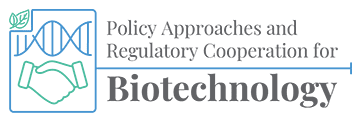Health Canada – Australia/New Zealand Safety Assessment Sharing
Cooperators:
Health Canada and Food Standards Australia New Zealand
Geography/Region:
Canada, Australia, and New Zealand
Mechanism of Cooperation:
Collaboration on Risk/Safety Assessments
Category of Cooperation:
Agreement
Last Updated:
August 8, 2024
Opportunity for APEC Economies
This is a successful case of collaboration on Risk/Safety Assessments between Canada, Australia, and New Zealand and offers an opportunity for other economies to learn and explore similar collaborative mechanisms that would work for them. This mechanism involves in-depth understanding of each other’s regulatory frameworks and administrative processes and may work better in a bilateral scenario or involving 2-3 economies rather than a bigger group.
Description
This safety assessment sharing initiative is an example in which regulators from different APEC economies worked together in the interest of saving both time and cost, minimize duplication, and resultantly contribute to improving synchronization of GM food approval to facilitate trade. Despite procedural differences, regulators worked together to overcome them and successfully completed reviewing an application for a genetically engineered product. While one agency conducted the safety assessment of the product, the other peer reviewed the report of that assessment in the capacity of a secondary assessor. Both the agencies made their decisions independently so that their respective service standards were met.
This initiative began in 2013 when regulatory agencies from these economies – Health Canada and Food Standards, Australia New Zealand (FSANZ) decided to leverage their safety assessment capacities to improve efficiency and synchronization of the GM food safety assessment process. At the outset, several foundational activities were conducted that included inter-agency peer view of past assessments, parallel/concurrent safety assessments, in-depth comparison, and discussion of operational similarities and differences, administrative, legal, and communication considerations. This enabled the agencies to build trust and formulate an appropriate approach for collaboration with improved alignment and efficiency while maintaining their own independent decision-making capability. The first pilot under this initiative was completed in 2021 for a genetically engineered canola variety for which Health Canada was the primary assessor. They produced a risk assessment report/summary in a format acceptable to FSANZ. Thereafter, they worked together to develop an internal template that both agencies could use. The second pilot began in 2023 for a genetically engineered maize variety with FSANZ as the primary assessor.
This initiative between Health Canada and FSANZ allows both regulatory agencies to use the outcomes of a safety assessment conducted by each other to inform their regulatory decisions. It is worth noting that the post-assessment processes and decisions of each agency remain separate and independent of each other. Additional information about this safety assessment sharing initiative can be found in the OECD’s ‘Considerations for Collaborative Work on Safety Assessment of Foods and Feeds Derived from rDNA Plants’ Consensus Document’. This document contains more examples of bilateral and multilateral efforts on regulatory cooperation.
Relevant links
- Health Canada: https://www.canada.ca/en/health-canada/services/food-nutrition/genetically-modified-foods-other-novel-foods/canada-food-standards-australia-new-zealand-gm-food-safety.html.
- FSANZ: https://www.foodstandards.gov.au/consumer/gmfood/GM-food-safety-assessment-sharing.
- OECD Consensus Document on Considerations for Collaborative Work on Safety Assessment of Foods and Feeds Derived from rDNA plants: https://one.oecd.org/document/ENV/CBC/MONO(2023)37/en/pdf.
- Global Low-Level Presence Initiative – Examples of Approaches on Cooperation….Canada-Australia-New Zealand Joint Safety Assessment Initiative: https://llp-gli.org/llp-currentapproaches.html.
